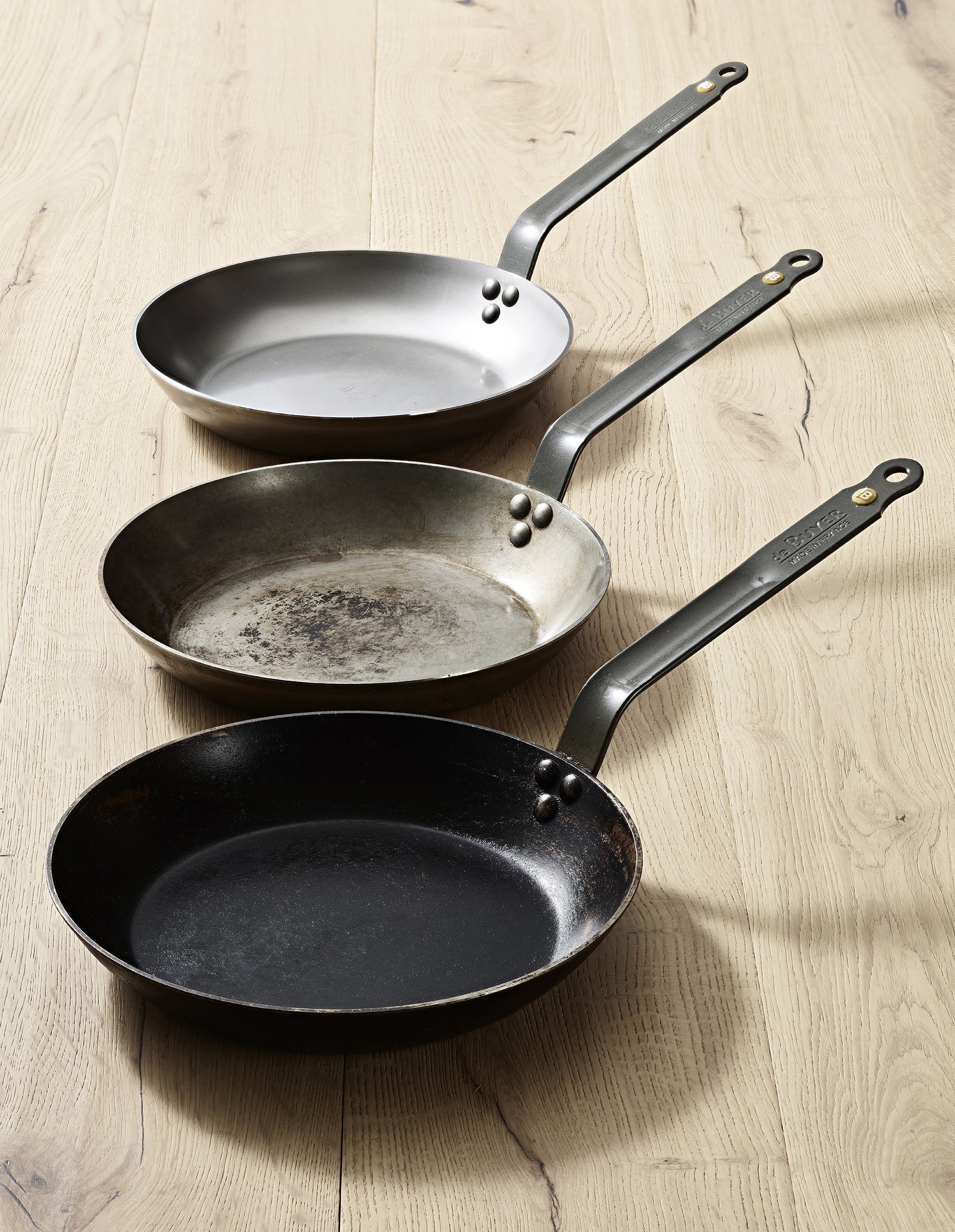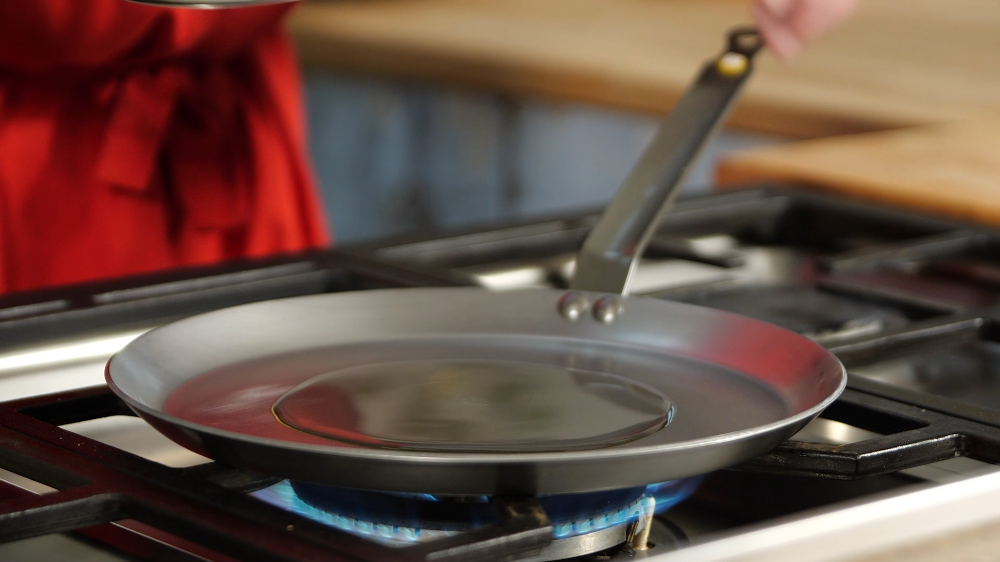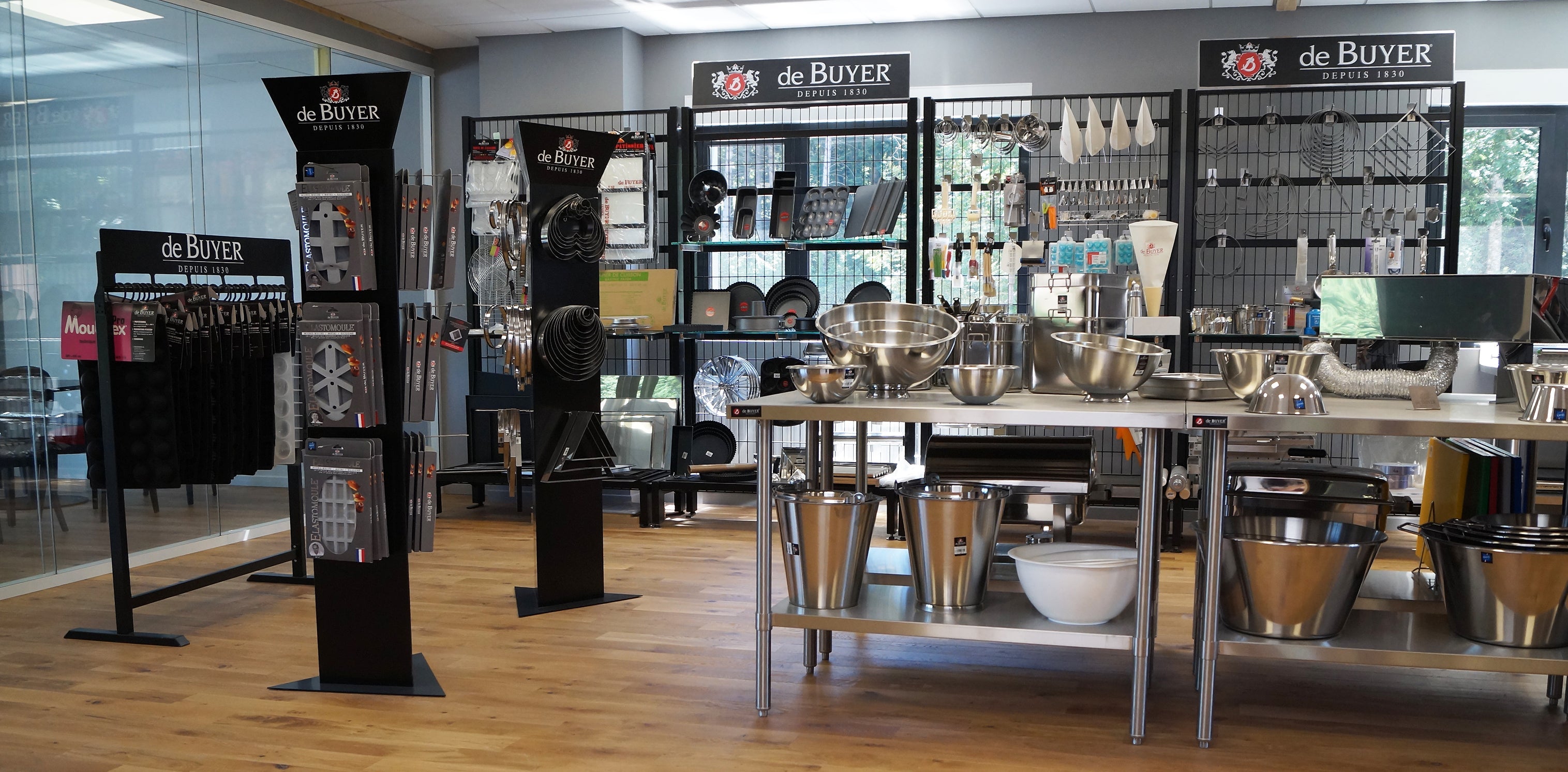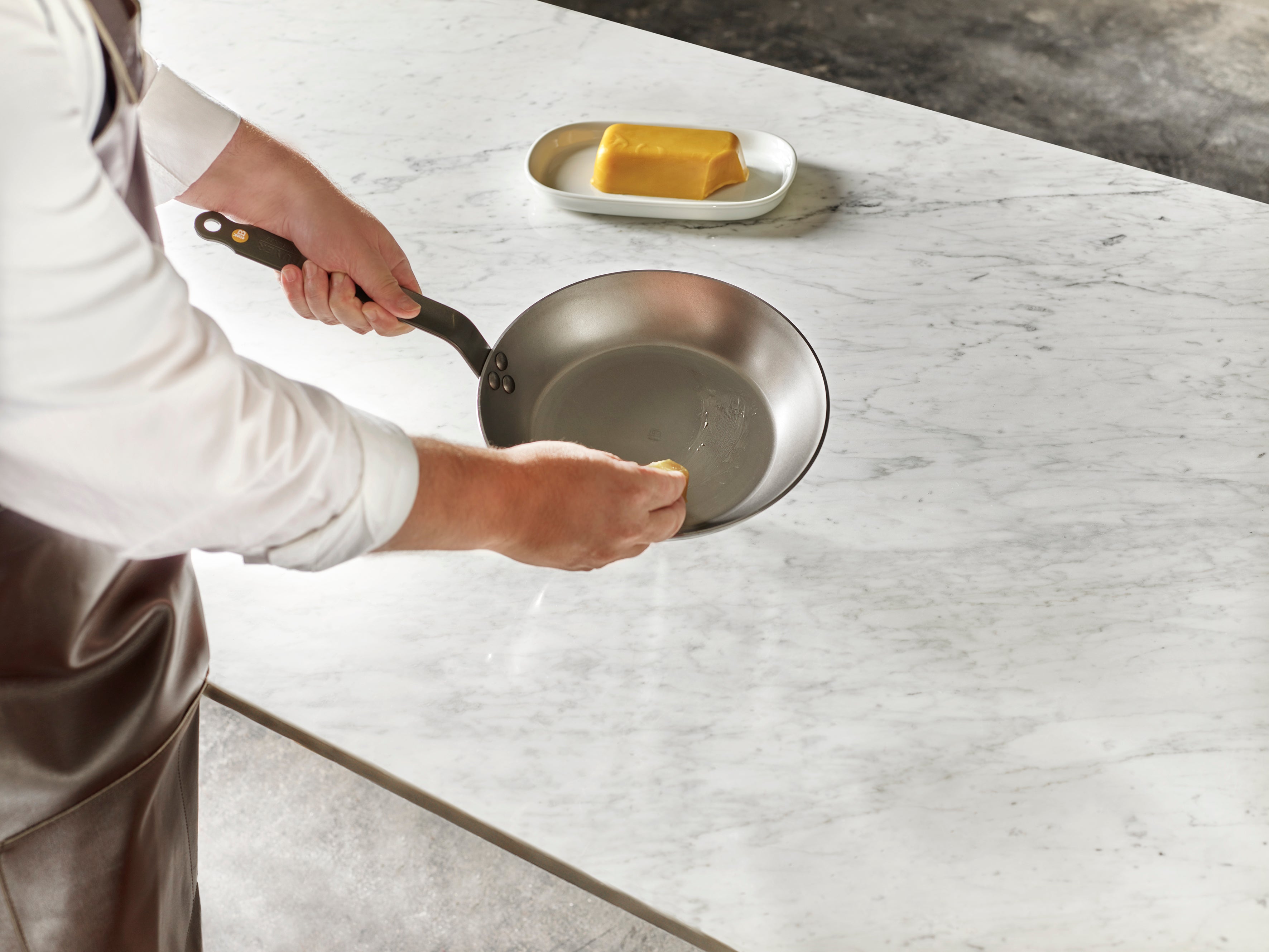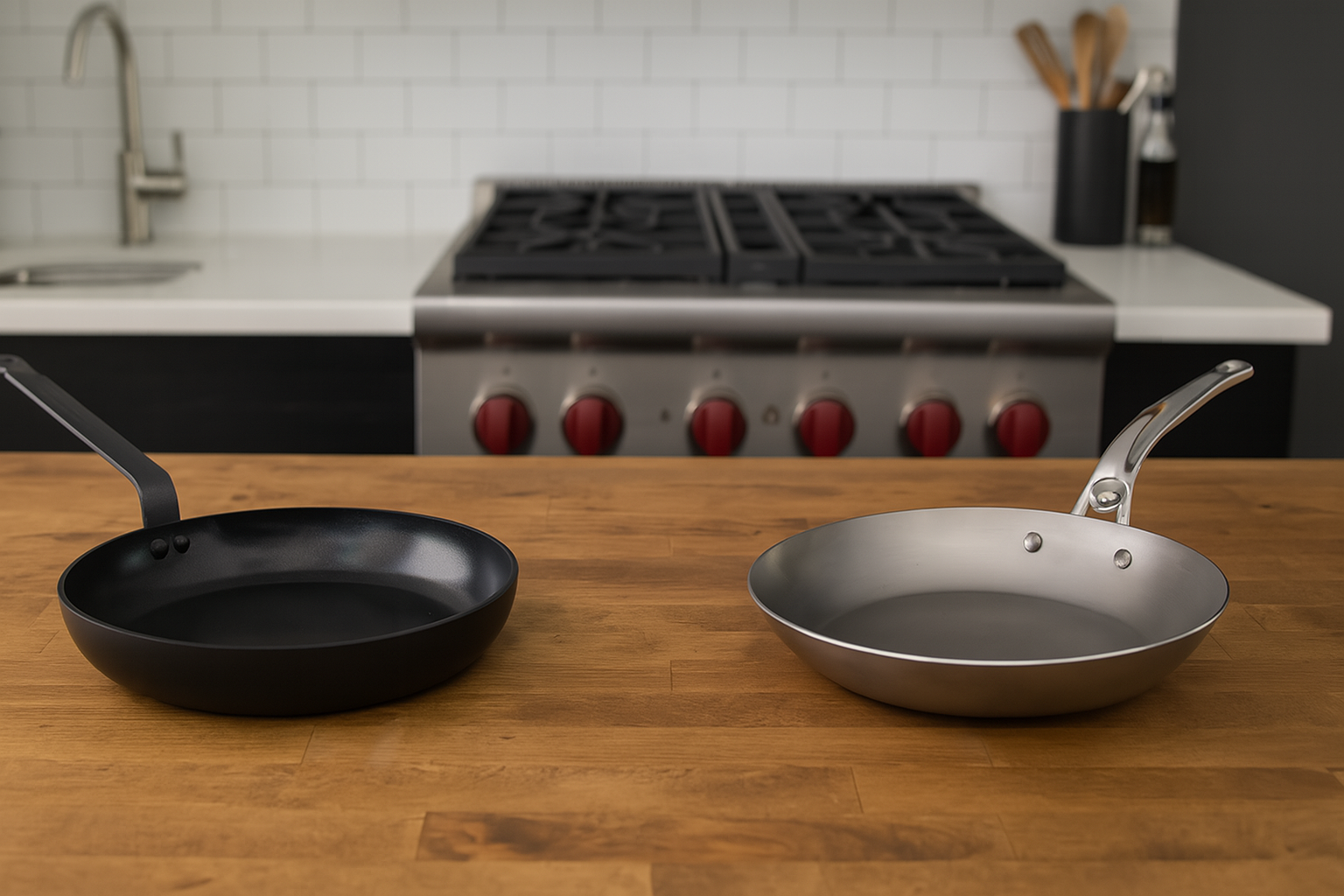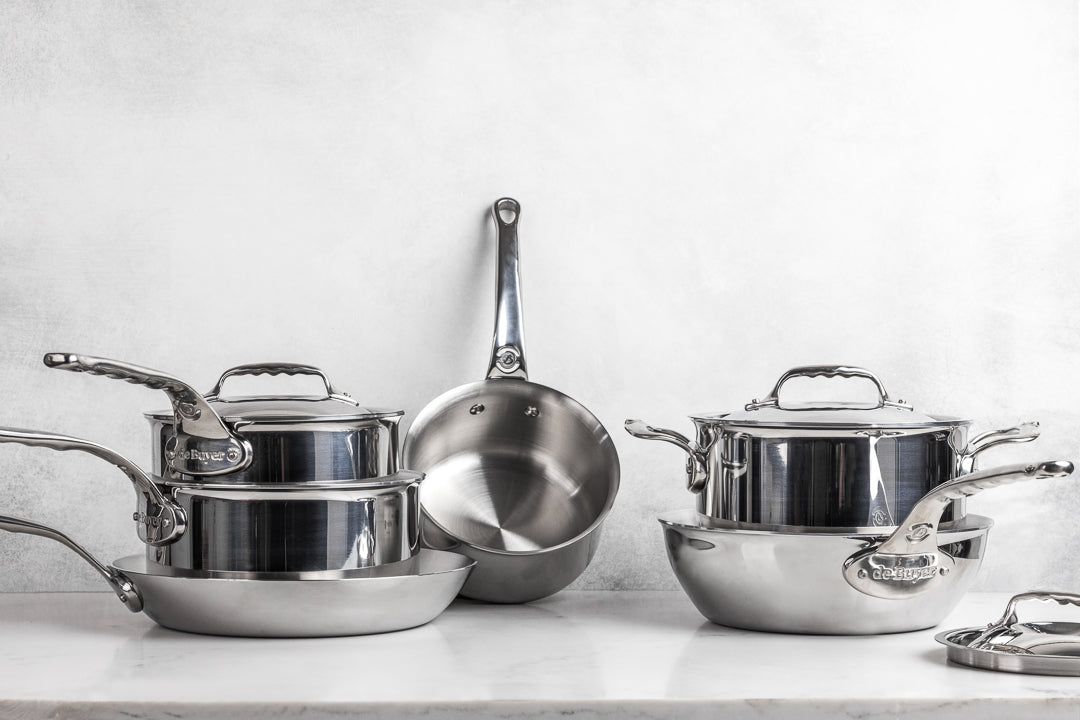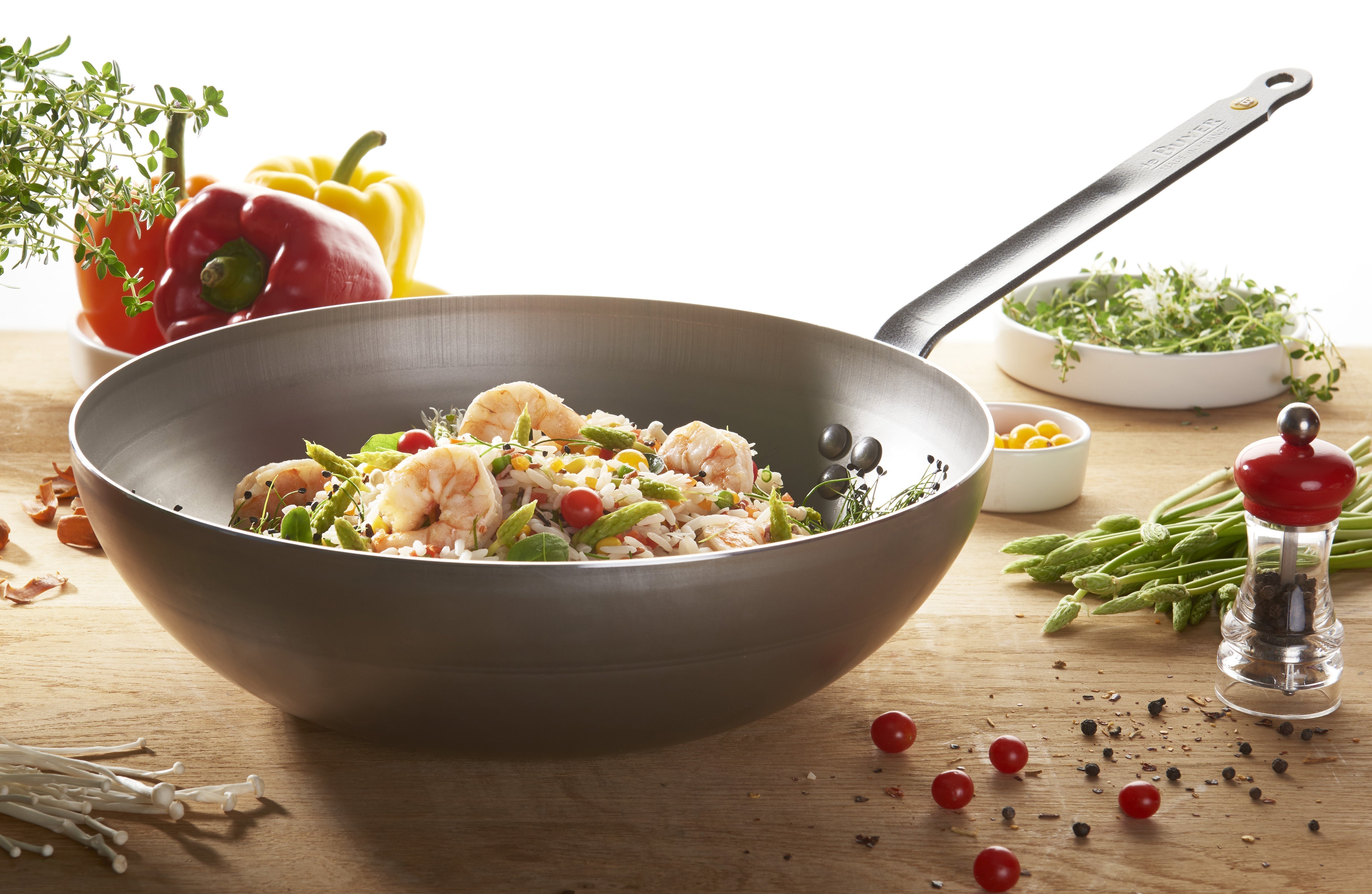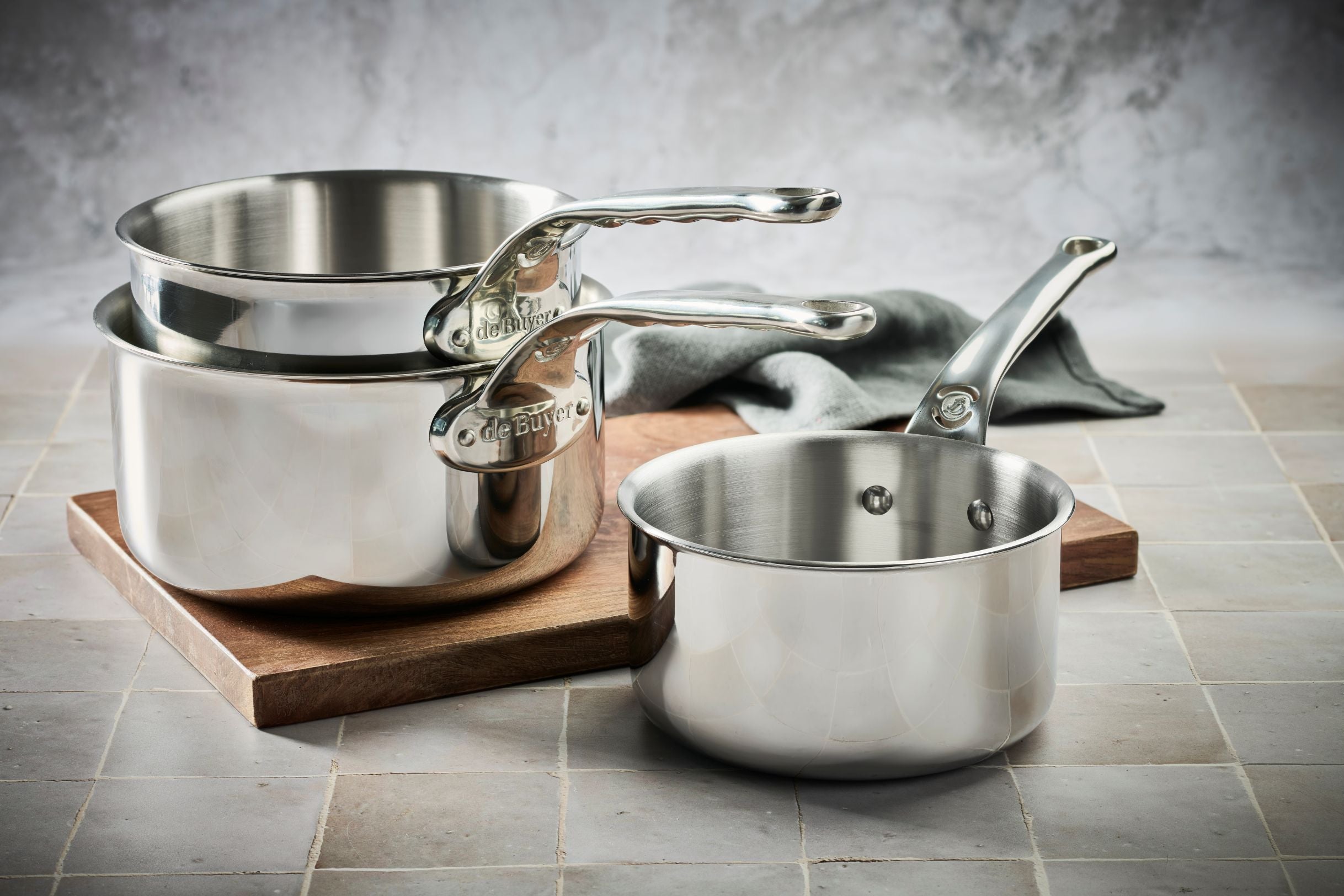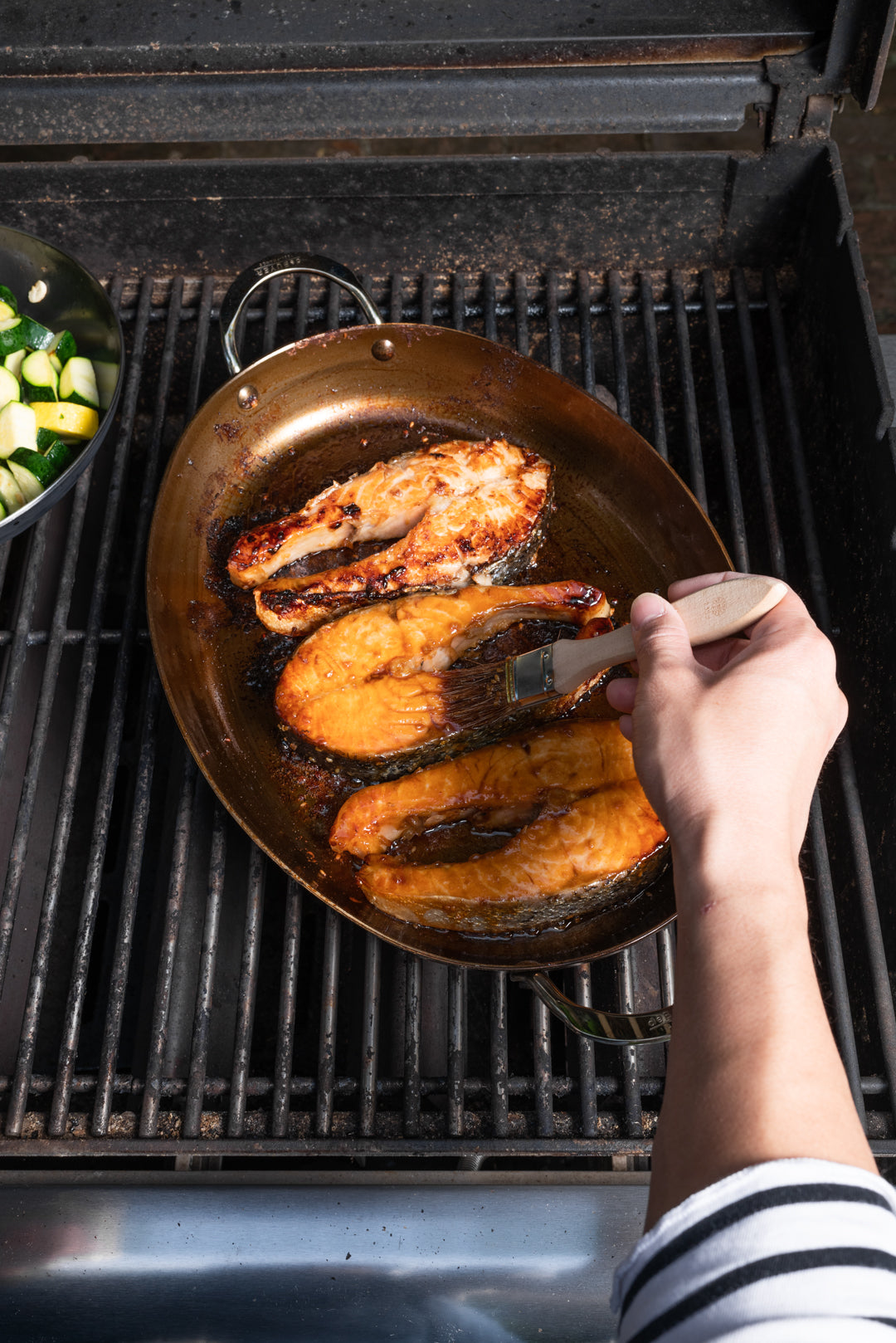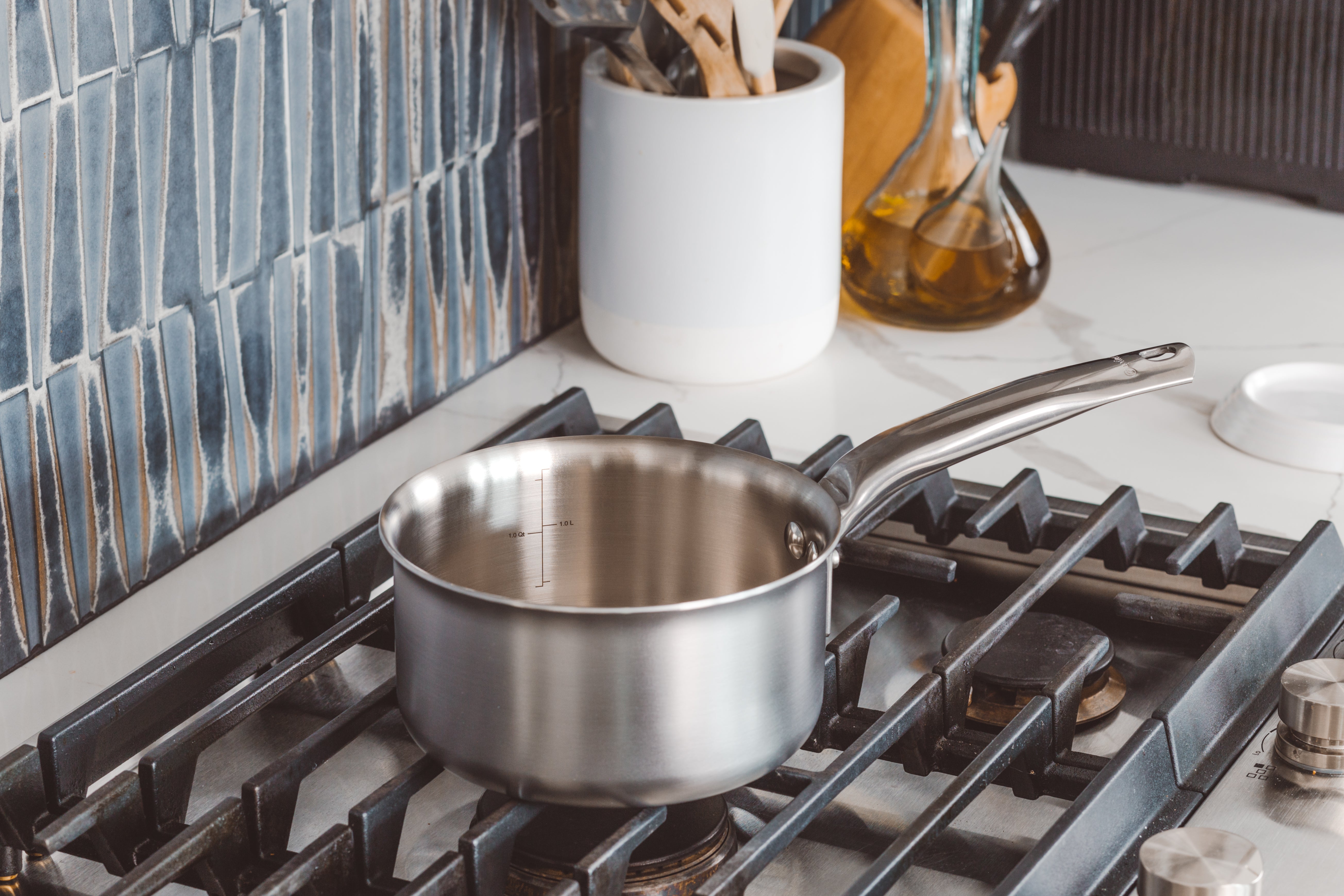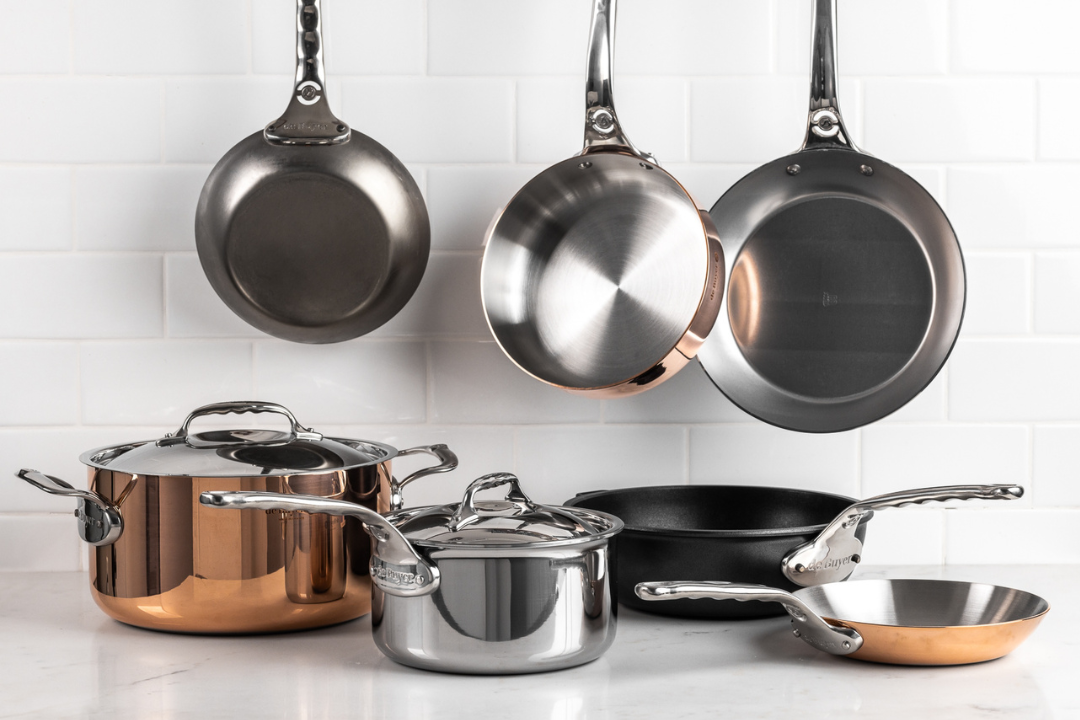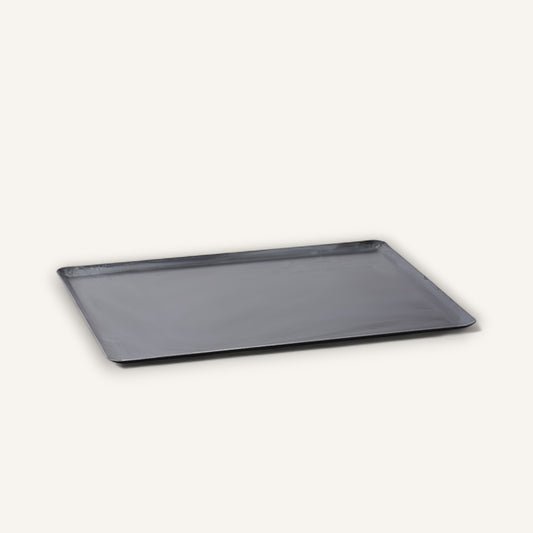The right cookware can truly elevate your cooking experience, enhancing flavor and streamlining your time in the kitchen. When deciding between carbon steel and aluminum pans, your individual cooking style and the types of food you prepare should guide your choice.
This article will compare carbon steel and aluminum pans, helping home cooks and professional chefs decide which best suits their cooking needs.
What is Carbon Steel?
Essentially, carbon steel cookware is a cast iron pan and a stainless steel pan blended together. These pans are made of 99% iron and 1% carbon, and this unique composition makes them a powerhouse cookware piece. These pans have:
- Excellent heat retention and even distribution
- Ability to develop a natural nonstick layer when seasoned
- Durability and longevity when properly cared for
The even heat distribution benefits of stainless steel cookware combined with the nonstick properties of seasoned cast iron combine beautifully in carbon steel. de Buyer’s Mineral B Carbon Steel Country Fry Pan is a great example of a high-quality carbon steel pan.
What is Aluminum?
Pure aluminum is the most common metal on Earth and can be easily made via the Hall-Héroult smelting process. Aluminum is also a malleable material, an excellent electrical conductor, and combines well with other metals.
Aluminum cookware is:
- Lightweight and easy to handle
-
Conductive for quick and even cooking
- Often less expensive than other materials
Aluminum is commonly used for cookware but may have issues with durability over time unless anodized or combined with other, stronger metals. For example, 5-ply and 3-ply stainless steel are made by sandwiching aluminum and high-quality, durable stainless steel. The aluminum core doesn’t change the fact that these pans are classified as stainless steel, not aluminum.
Anodization is an electrolytic process used to increase the thickness of the natural oxide layer on an aluminum pan. This option increases the durability of aluminum cookware and comes with a higher price tag.
Carbon Steel vs. Aluminum Pans: Key Differences
Both carbon steel and aluminum pans have their pros and cons. Here are the key factors you should be aware of before purchasing.
Heat distribution and retention
Carbon steel pans hold heat better and distribute it evenly, making them great for high-heat cooking methods like searing and frying. Aluminum heats up quickly and cools down quickly, making it ideal for fast cooking techniques or baking but less reliable for even stovetop heat distribution over long periods.
Durability
Carbon steel pans, when properly seasoned, can last for years and years. These pans are incredibly resistant to wear. Aluminum pans are much more prone to dents and scratches, especially non-anodized versions, and may need replacement sooner.
Weight
Carbon steel pans are slightly heavier and may be harder to handle for some cooks, but the added weight contributes to better heat retention. Further, carbon steel is the lighter alternative to cast iron, so it’s still not the heaviest pan you can use.
Aluminum pans are lightweight, making them easier to maneuver, but they may not provide the same robust cooking performance as carbon steel.
Maintenance and care
Carbon steel requires seasoning and care to maintain its nonstick surface and prevent rust. Aluminum pans, especially nonstick or anodized versions, require almost no maintenance but can lose their nonstick properties over time, especially if used incorrectly.
Reactivity
Carbon steel is more inert and will not react with acidic foods, making it suitable for a wide range of dishes. In some cases, acidic foods may damage the seasoning layer. You can simply re-season, and the pan is as good as new.
Aluminum cannot be used to cook acidic foods. Acid permanently changes the chemical structure of the pan, and any food cooked in the pan will have a slight metallic taste.
Best Cooking Methods for Carbon Steel vs. Aluminum
Carbon steel and aluminum frying pans both may play a role in your kitchen, but ensure you’re using each pan optimally.
- Carbon steel
- Best for searing, stir-frying, browning, and dishes requiring high heat
- Ideal for recipes that require excellent heat retention, like frying chicken, steaks, or sautéing vegetables
Aluminum
- Best for lighter cooking methods such as sautéing, cooking delicate dishes like eggs, pancakes, and fish, or baking
- Perfect for quick, low-fat cooking techniques and stir-fries with lighter ingredients
Aluminum frying pans aren’t the only option. If you’re a baker, you likely already own a few aluminum baking sheets. Aluminum is excellent at baking dishes like tarts, cookies, pizza, and pastries to perfection. The lightweight nature of the metal and its ability to heat quickly make it well-suited for oven baking.
And, unlike an aluminum frying pan, an aluminum baking sheet is rarely at risk of being damaged by acidic foods. Use high-grade aluminum baking sheets that won’t get bent out of shape by a high-temperature bake.
Which One is Best for Your Kitchen?
Choose your cookware and bakeware based on individual cooking styles and needs.
-
Choose carbon steel if you need:
- Better heat retention for high-heat cooking
- A durable, long-lasting pan that improves with use (seasoning)
-
A pan that can handle heavier, more robust cooking tasks
-
Choose aluminum if you need:
- A lightweight pan for easy maneuverability
- A pan that heats up quickly for fast cooking
- An affordable option for everyday, quick meals or delicate cooking methods
Non-anodized aluminum is affordable and can be a good option for starter kitchens. Anodized aluminum comes at a steeper price point and will last you longer. Aluminum baking sheets are the most common type of bakeware and a staple in professional and home kitchens.
However, if you’re looking for lifelong investment cookware, carbon steel is the way to go. Carbon steel fry pans, roasting pans, woks, and more are worth their weight in gold and only get better with time.
Find the Perfect Pan for Your Cooking Needs
The right choice between carbon steel and aluminum pans depends on your cooking preferences, style, and needs. For the most durable, long-lasting, high-performance metal cookware, consider de Buyer’s carbon steel.
The quality and craftsmanship of the Mineral B Pro Carbon Steel Pans and Blue Carbon Steel Pans are vital for those seeking durable, high-performance cookware. Browse the entire de Buyer collection for cookware that can elevate your cooking experience.
